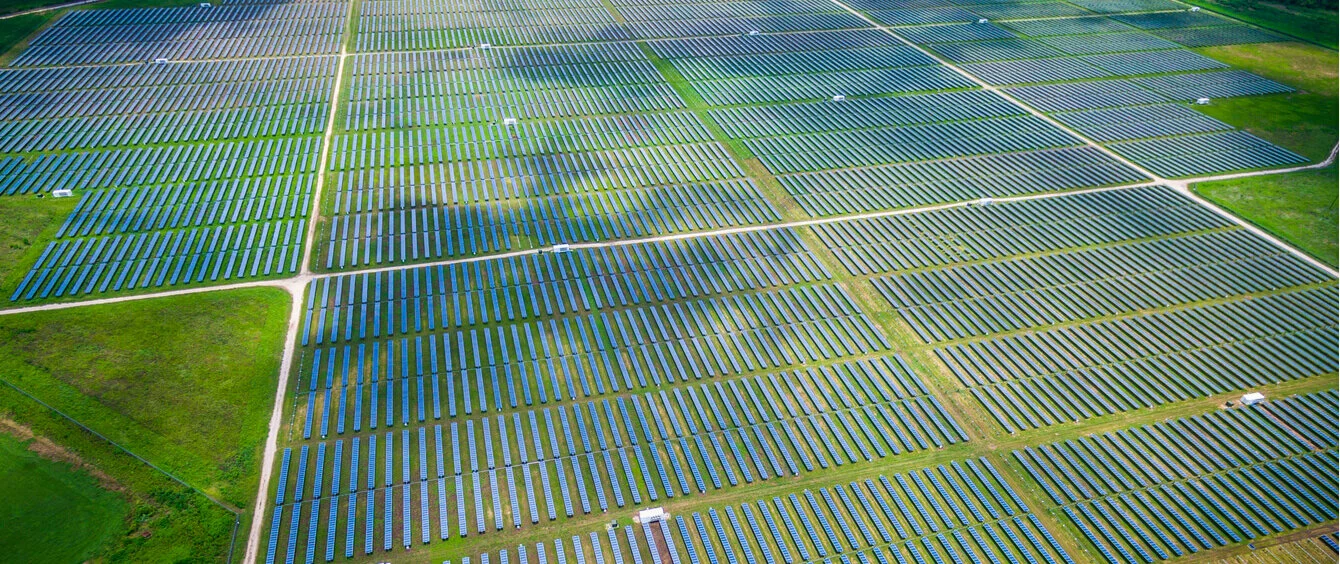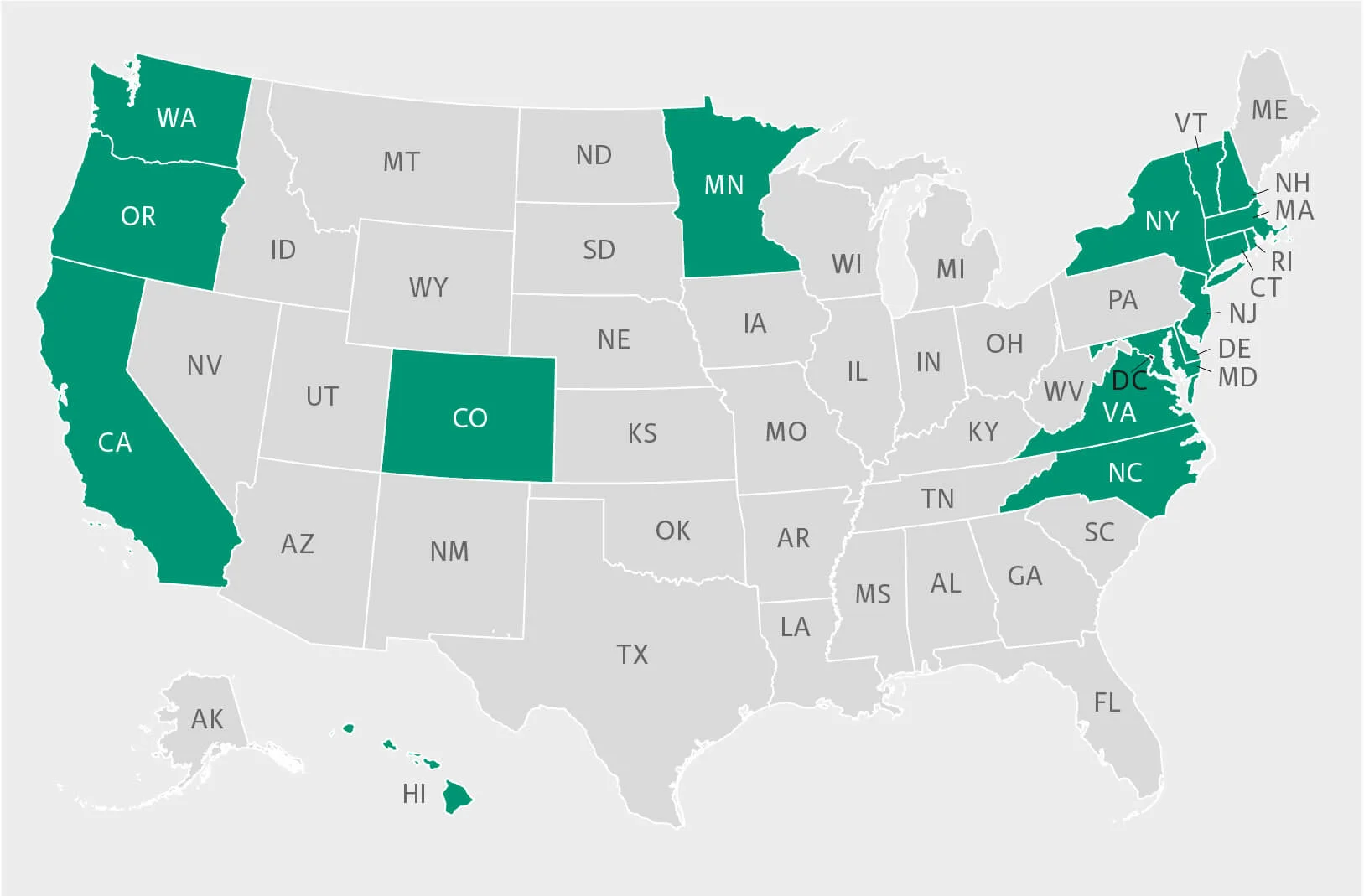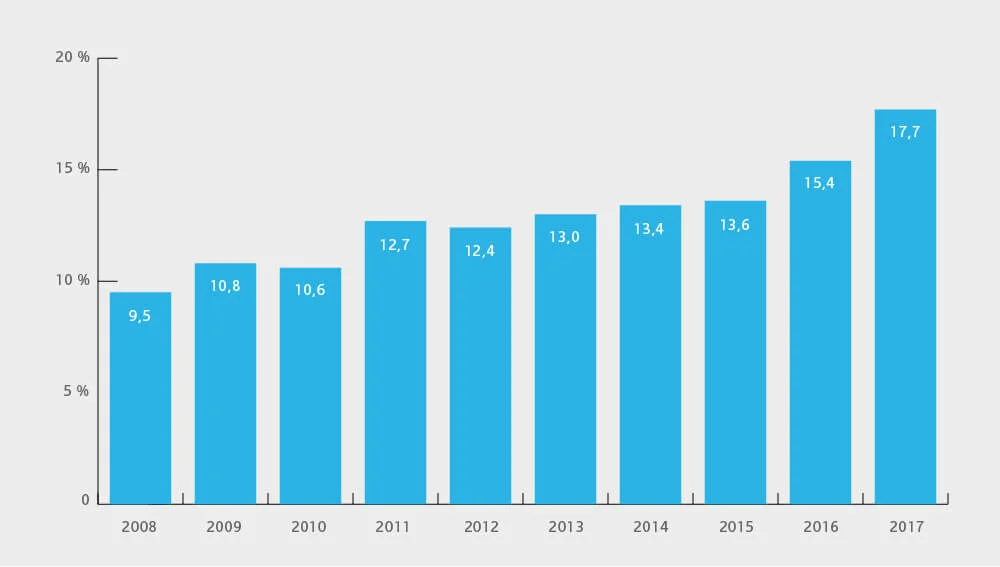Renewable energy is also booming in the USA, despite the Trump administration wanting to pull out of the Paris Agreement and favour oil and gas. California produces 20 percent of its electricity with solar plants whilst the Midwest has invested in huge wind farms. Numerous federal states are responsible for the change, but also companies, in particular large Internet firms such as Apple, Google and Amazon, have also had their part to play.
It is a little-known fact: Not Saudi Arabia, not Russia and not the Gulf states, but the USA is considered to be the superpower of fossil energy. Thanks to fracking technology, the country will be producing more natural gas than it can use itself from 2019 onwards. However, the USA is already the world’s largest producer – by far. And according to estimates, it is only a matter of time before they overtake Russia in the oil sector as well. To further drive growth, US President Donald Trump has approved the construction of the controversial Keystone XL oil pipeline. In addition, he announced that the US would be withdrawing from the Paris Agreement, despite the fact that the USA is the world’s second-largest energy consumer after China and produces the most carbon dioxide.
Resistance to climate policy
However, there is massive resistance to the government’s climate policy in Washington: 15 of the 50 states have voluntarily committed themselves to reducing greenhouse gas emissions under the Paris Agreement. California, the most heavily-populated state in the USA, is going one step further and intends to source 60 percent of its electricity supply from renewables by 2030. States can levy taxes on energy, set quotas for power generation and promote infrastructure projects – which gives them significant power. Large corporations such as Apple, Amazon and Google have joined the We Are Still In initiative, an alliance of non-governmental climate activists which want to continue implementing the Paris Agreement.
The measures are showing initial success: According to the International Energy Agency, no country in the world saved more carbon dioxide in 2017 than the USA – for the third year in a row. “A great deal is being done. There are many climate-friendly initiatives, tax incentives and regulations in the states, cities and regions,” Brian La Shier, climate expert at the Washington Institute for Energy and Environmental Studies (EESI), told ARD.
Solar and wind power are booming
Solar energy and wind energy are experiencing a real boom and are mainly responsible for the reduction in emissions: Between 2008 and 2017, the share of renewable energy in electricity production doubled from nine to 18 percent. This is lower than in some European countries. However, the overall increase in capacity is far greater. New investments in solar and wind power plants actually exceed those in fossil fuels. In 2017, half of the 24.6 gigawatts in newly installed electricity generation capacity came from renewable energy sources. The main reason for the boom is the sharp decline in prices for solar panels. According to the Solar Energy Industries Association, one new solar plant was completed approximately every 84 seconds in 2016.
The pioneers of solar energy are the states of California, Vermont and Hawaii, traditionally governed by Democrats. On the Californian west coast, almost 20 percent of the electricity is generated with solar systems. But even states governed by the conservatives are pushing ahead with the expansion of renewable energy. Texas is one of the largest wind farms in the world. As an independent country, it would be the sixth-largest producer of wind energy. Some time ago, the former conservative governor Rick Perry succeeded in having high-voltage lines connect the sparsely populated and windy west of the state with the metropolises on the coast. And Oklahoma has overtaken California as the environmental pioneer with the highest number of wind turbines – not least because Google is investing in several wind farms there.
Internet companies are relying on renewables
The larger Internet companies are increasingly relying on renewable energy to cover their enormous energy requirements, especially for their data centres. Google and Apple now only use green electricity, some of which they generate themselves or purchase directly through electricity supply contracts with plant operators. For example, Apple’s new headquarters in Cupertino, south of San Francisco, will be powered by a 17-megawatt rooftop solar power plant and four megawatts of biogas fuel cells. Other companies such as Amazon, Microsoft and Facebook are also increasingly turning to renewables.
One thing is clear despite the eco-boom: Oil and gas will continue to play an important role in the future. The USA still produces more than 80 percent of its electricity from fossil fuels, which actually have to cover 90 percent of its total energy consumption. However, the share of renewable energy will continue to rise sharply as a result of investments.
Photo credits: Roschetzky Photography, shutterstock.com; Maps Expert, shutterstock.com


